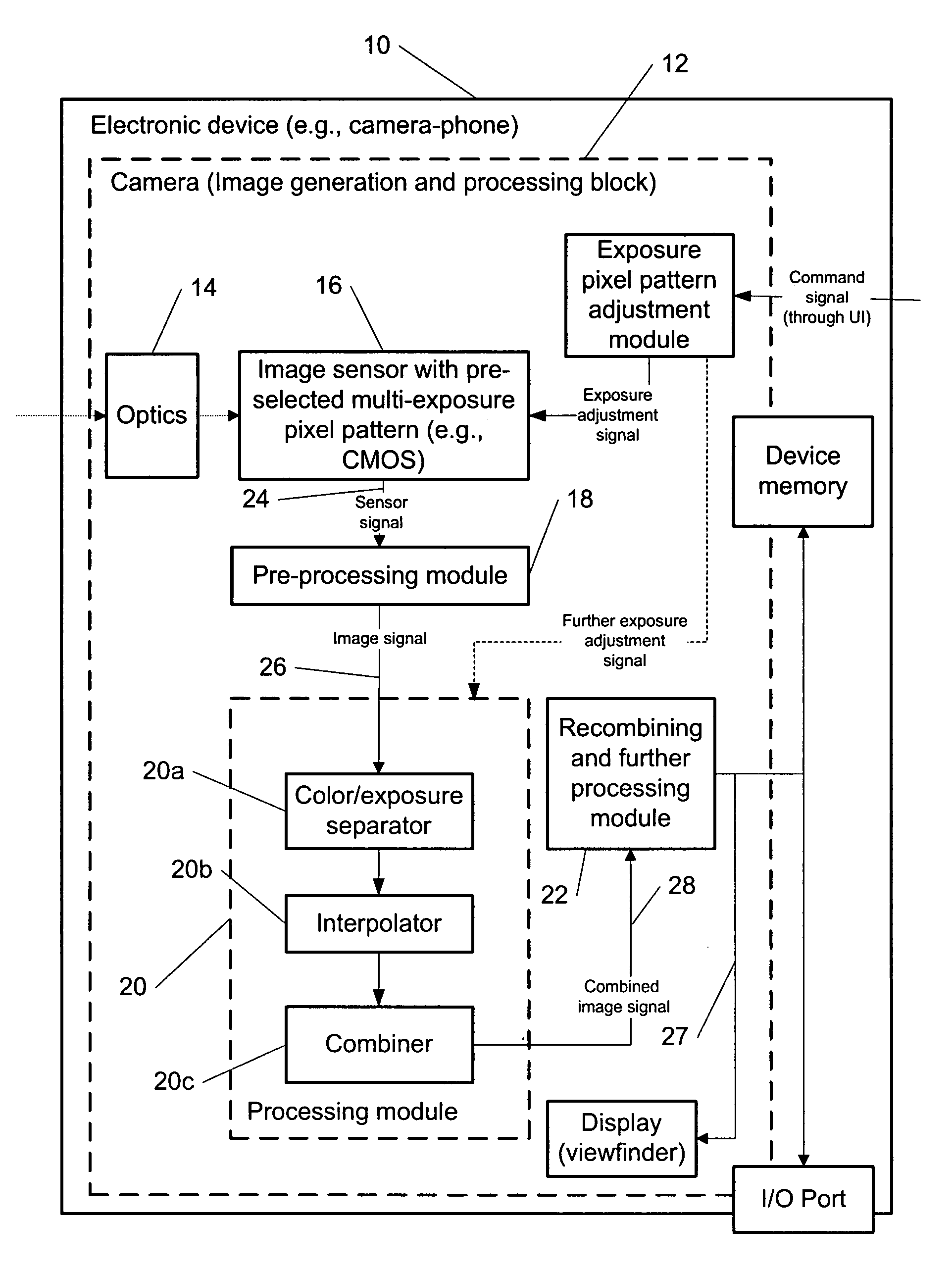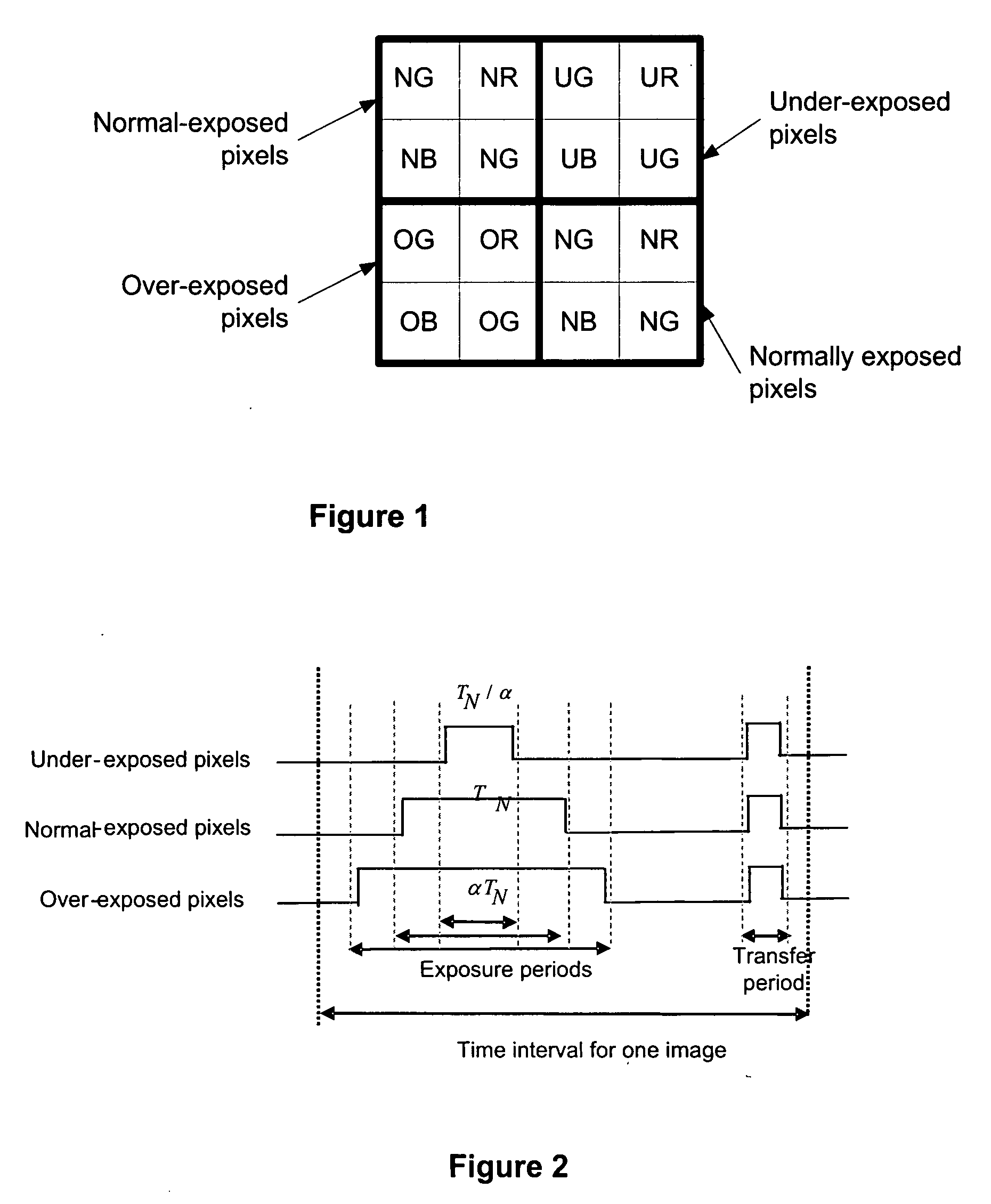Multi-exposure pattern for enhancing dynamic range of images
a dynamic range and image technology, applied in the field of camera or electronic device, can solve the problems of loss of granularity, increase the noise level of recorded images, and cannot recover the intrinsic loss of dynamic range, and achieve the effect of enhancing the dynamic range of images
- Summary
- Abstract
- Description
- Claims
- Application Information
AI Technical Summary
Benefits of technology
Problems solved by technology
Method used
Image
Examples
Embodiment Construction
[0039]A new method, apparatus and software product for enhancing a dynamic range of an image with a multi-exposure pixel pattern taken by an image sensor of a camera for one or more color channels, wherein a plurality of groups of pixels of the image sensor have different exposure times (e.g., pre-selected electronically, selected by a user through a user interface, programmable, adjusted through a user interface using a viewfinder feedback, adjusted by a user through a user interface after taking and storing RAW image, etc.). According to an embodiment of the present invention, processing of the captured image for constructing an enhanced image of the image for each of the one or more color channels can be performed using weighted combination of exposure times of pixels having different exposure times according to a predetermined criterion. The camera can be a part of, e.g., an electronic device such as mobile phone or mobile camera-phone for wireless communications, or a portable ...
PUM
 Login to View More
Login to View More Abstract
Description
Claims
Application Information
 Login to View More
Login to View More - R&D
- Intellectual Property
- Life Sciences
- Materials
- Tech Scout
- Unparalleled Data Quality
- Higher Quality Content
- 60% Fewer Hallucinations
Browse by: Latest US Patents, China's latest patents, Technical Efficacy Thesaurus, Application Domain, Technology Topic, Popular Technical Reports.
© 2025 PatSnap. All rights reserved.Legal|Privacy policy|Modern Slavery Act Transparency Statement|Sitemap|About US| Contact US: help@patsnap.com



